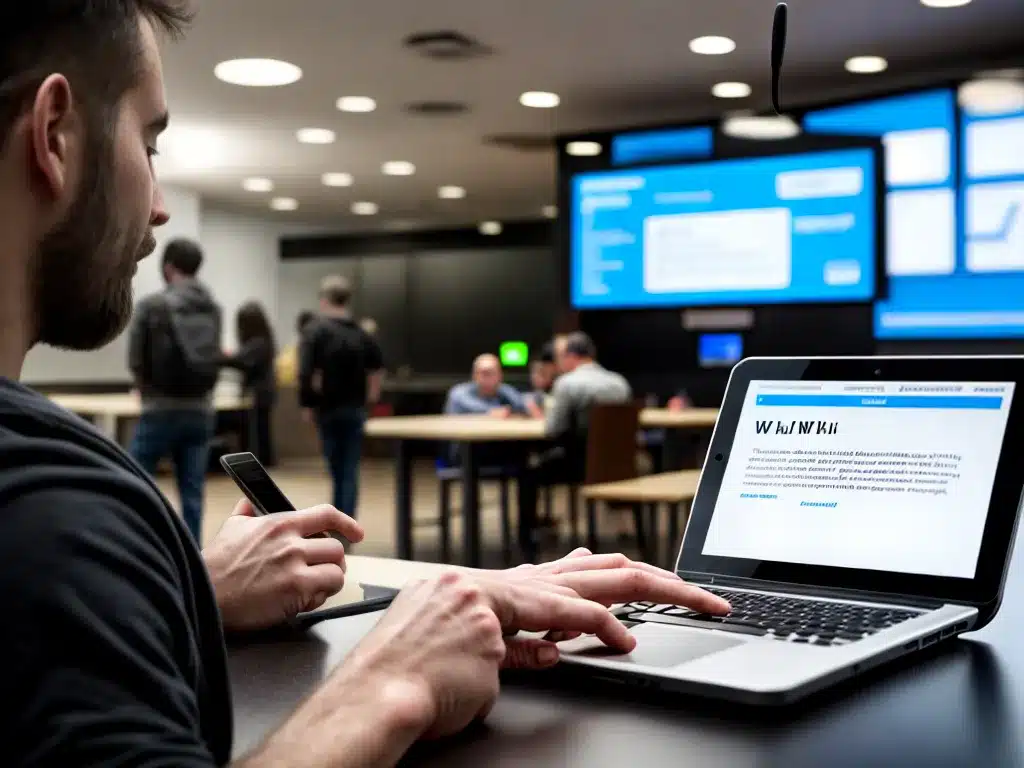
How To Prevent Man-In-The-Middle Attacks On Public WiFi
Using public WiFi can be very convenient when you are out and about, but it does come with some security risks that you should be aware of. One of the main threats is a man-in-the-middle (MITM) attack, where a hacker intercepts communications between you and the WiFi network. Here are some tips on how to prevent MITM attacks when using public WiFi:
Use a Virtual Private Network (VPN)
A VPN is one of the best ways to protect yourself on public WiFi. A VPN creates an encrypted tunnel between your device and a remote server operated by the VPN service. All your network traffic is routed through this tunnel, which prevents hackers on the local network from eavesdropping on your communications. Some good VPN providers to consider are NordVPN, ExpressVPN, and ProtonVPN.
When choosing a VPN, look for one that offers strong encryption like AES-256 bit encryption. Make sure the VPN has a no logs policy and doesn’t store any of your personal usage data. Also check that the VPN provider has servers in locations that you are likely to travel to.
Using a VPN is quick and easy. Just sign up for a service, install the app on your devices, and connect to a server when using public WiFi. This encrypts all network traffic end-to-end, keeping your data safe.
Use HTTPS Websites
The HTTPS protocol encrypts communications between your browser and a website. This prevents an MITM attacker from being able to read or modify traffic. To ensure you are using HTTPS, look for the lock icon in your browser’s address bar and make sure the site uses HTTPS:// rather than just HTTP://.
Many sites now use HTTPS by default, but it is worth double checking whenever you visit a new website. Pay particular attention when entering sensitive information like usernames, passwords, or payment details – only enter this on HTTPS sites.
Avoid Sensitive Activities
It is best to avoid any sensitive internet usage over public WiFi where possible. Activities like online banking, shopping, and entering passwords should only be done on a trusted network.
Similarly, avoid accessing internal company servers and information when connected to public WiFi. If you need to temporarily access something sensitive, use a VPN to encrypt the connection.
Disable File Sharing
Some public WiFi networks have file sharing enabled by default, allowing anyone else connected to the network to access files on your device. To prevent this, disable file and printer sharing in your system settings when connecting to public WiFi.
On Windows, open the Control Panel > Network and Internet > Network and Sharing Center. On Mac, open System Preferences > Sharing.
Use a Firewall
A firewall helps protect your device from incoming attacks targeting vulnerabilities. Windows and MacOS both have built-in firewalls that you should enable for added protection on public networks.
Third party firewalls like ZoneAlarm or GlassWire can also provide more advanced filtering of incoming and outgoing connections. Use these to limit network access when on public WiFi.
Turn Off WiFi When Not In Use
Don’t leave WiFi turned on at all times. Quickly turn it off when you are finished using public WiFi to limit your exposure to attacks.
It is also a good idea to disconnect from public WiFi networks rather than just closing the browser. This forces the access point to drop the connection rather than allowing it to persist in the background.
Practicing good WiFi hygiene is key for staying secure on public networks. Following these tips will help prevent MITM attacks and keep your data safe when connecting outside the home. Be vigilant when using free WiFi and don’t transmit anything too sensitive over a public network. Taking some basic precautions will allow you to safely use public hotspots.












